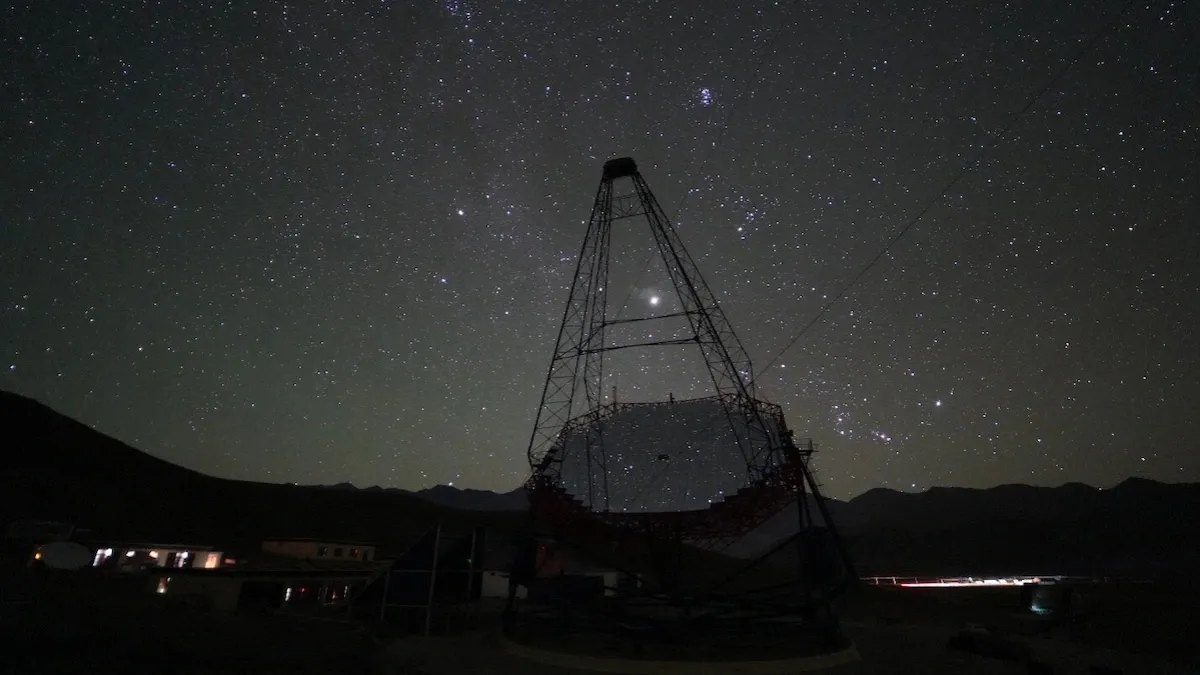
At a height of around 4,300 meters, the largest imaging Cherenkov telescope in Asia was officially opened on Wednesday at Hanle in Ladakh. With help from the Electronics Corporation of India Ltd (ECIL) and other Indian industrial partners, the Mumbai-based Bhabha Atomic Research Centre (BARC) created the Major Atmospheric Cherenkov Experiment (MACE) observatory, the highest telescope of its kind in the world.
With the ability to investigate high-energy gamma rays, the MACE observatory is expected to propel India to the forefront of worldwide cosmic ray research. Deeper comprehension of the most intense occurrences in the universe, such supernovae, black holes, and gamma-ray bursts, will be made possible by this. The telescope conducted excellent work detecting gamma ray flares as far away as 200 million light years before it was formally inaugurated.
MACE features 1,424 diamond-turned metallic mirror facets, 712 actuators, 1,088 photo-multiplier tubes, 68 camera modules, and a reflector area of 356 square meters. It weighs 175 tonnes.
It has a high strength and temperature endurance with a lightweight design. The highly reflective diamond-turned custom-built metallic mirror facets that make up the reflector surface, which spans more than 350 square meters (sqm), must be precisely aligned with a parabolic surface to within 2 mm of each other. To improve light collection efficiency, a number of photomultiplier tubes installed with specialized assembly are present in the camera at the focal point.
The combination of ultrafast backend electronics and nanosecond digitizing electronics is designed to operate at minimal power and low temperature. Severe weather limits transportation to six to eight months of the year and interferes with the availability of workers with the necessary training on location.
The atmosphere stops gamma rays before they can reach the Earth's surface. On the other hand, collision with the atmosphere produces high-energy particles that surpass the speed of flight and release sonic boom-like Cherenkov radiation. These flashes are recorded by the mirrors and cameras, which then link them to their cosmic origin.
Hanle provides the exceptionally low light pollution needed for gamma ray investigations, making it a carefully selected site with distinct scientific advantages. MACE's location's longitudinal advantage allows it to observe sources that are hidden from view in other areas of the globe.
